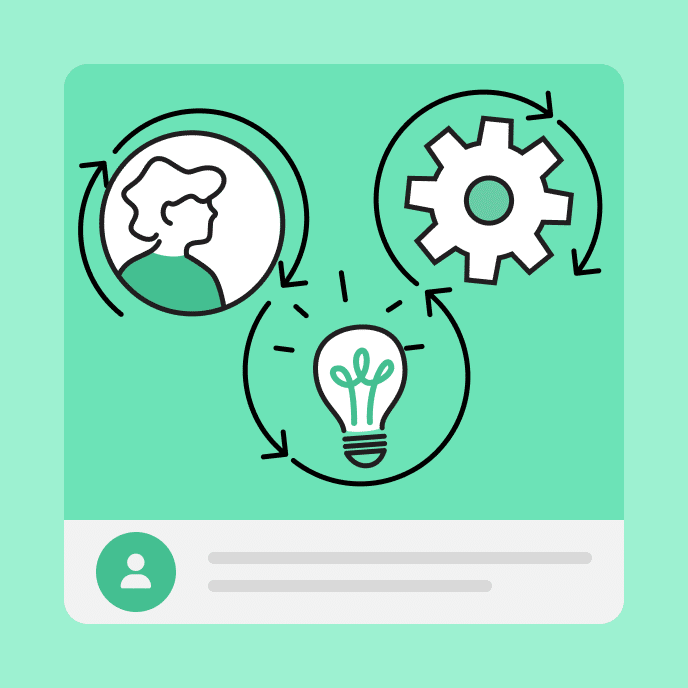How to Prove Your E-Learning Works Without Performance Data
Discover practical ways to measure e-learning success that go beyond performance data, helping you prove value and identify improvements for your training programs.

Show the true value of your e-learning projects
Your e-learning project deserves better measurement than just performance data. While traditional metrics matter, they don’t tell the whole story of your training’s impact. This guide will show you practical alternatives that demonstrate real value to stakeholders and help you improve future courses.
Why performance metrics alone aren’t enough
Performance improvement seems like the obvious way to measure training success. But relying only on this approach creates several problems for new instructional designers.
Some training benefits take months to show up in performance data. Your course might be working perfectly, but you won’t see results right away. External factors like market changes or new procedures can also affect performance, making it hard to know what came from your training.
You might also face situations where you don’t have baseline measurements to compare against. And some courses focus on awareness or compliance rather than performance improvement.
Better ways to measure your e-learning success
Success looks different for every project. Based on your goals, try these alternative metrics that often tell a more complete story than performance data alone:
Cost reduction
Money talks, especially to decision-makers. Tracking the financial benefits of your e-learning shows immediate ROI that traditional metrics can’t match. Look at both direct savings and productivity gains when building your case.
Track how much money your e-learning saves compared to traditional training:
- Less travel spending
- Fewer hours away from work
- No need for physical facilities or materials
- Train more people without spending much more
Convenience and accessibility
The flexibility of e-learning is a major advantage that deserves measurement. When people can learn on their terms, participation improves and scheduling nightmares disappear. This benefit alone justifies many e-learning projects.
Measure how your e-learning makes training easier:
- Available anytime, fitting into busy schedules
- Same quality experience for everyone
- Higher completion rates
- Fewer scheduling headaches
Compliance achievement
For regulatory or mandatory training, completion itself is often the primary goal. Your metrics should focus on documentation and verification rather than performance change. This approach satisfies both legal requirements and learning needs.
For regulatory training, success means:
- Everyone completes training by the deadline
- Assessment scores prove knowledge
- Records ready for any audit
- Fewer compliance mistakes
Knowledge retention
This is probably one of the most challenging parts of training success to measure. Learning that doesn’t stick is just wasted time. Measuring knowledge over time helps you see if your design choices are working. Look beyond initial test scores to see if people remember and apply what they learned weeks or months later.
Track what people actually learn:
- Better assessment scores
- Knowledge that sticks around longer
- More confidence in the subject
- People using what they learned at work
Learner satisfaction
Happy learners engage more deeply with content. While satisfaction alone doesn’t guarantee learning, negative experiences certainly prevent it. Gathering feedback helps you improve future courses and build support for your e-learning program.
Get feedback on the experience:
- Positive survey responses
- High engagement with the content
- People taking optional courses
- Colleagues recommending courses to each other
How to set up meaningful metrics
Start by understanding what your organization really needs from the training. What problems are you trying to solve? Then identify what you can realistically measure.
The best approach combines different types of measurements. Try to capture both immediate reactions (like survey feedback) and longer-term results (like knowledge application). This gives you a fuller picture of your training’s impact. At a minimum, try to do some sort of pre-assessment at the beginning of the course and then compare that to a matching post-assessment. You may not have access to all of the metrics, but you can at least show improvement based on the before and after of the course.
Building measurement into your design from the beginning makes data collection easier. Use your LMS reports, existing business metrics, and targeted follow-up to gather insights without creating extra work.
Real example: New account system training
A financial services company trained customer service reps on a new account system. Instead of waiting months to see performance changes, they measured:
Cost reduction:
- 65% less money spent on training
- 40% less time away from helping customers
Convenience:
- 98% of people finished before the system launched
- Staff trained during slow periods without disruption
Learning and application:
- 92% average score on assessments
- 30% fewer requests for help
- 25% faster transaction times
By tracking different metrics, they showed value from multiple angles, even though some performance benefits would take time to fully appear.
Key takeaways: Measure what matters for your projects
When measuring e-learning success, don’t limit yourself to performance metrics. Choose metrics that align with your organization’s goals and the purpose of your specific training. By developing a balanced approach to measurement, you’ll demonstrate the true value of your work in ways that resonate with stakeholders and justify continued investment in quality learning experiences.
Your next steps should include identifying the 2-3 most relevant metrics for your current project and setting up simple systems to track them. Start small with measurement, then expand as you gain confidence in showing the full impact of your e-learning.
You may also like

The ADDIE Model: 5 Steps to Effective Workplace Training
Explore the five phases of the ADDIE Model, and learn how to apply them for an adaptable, iterative approach to creating relevant workplace training.

